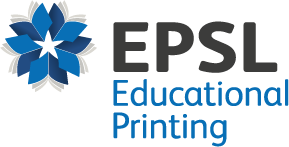What are tinted exercise books, and how can they help your class?
The different available shades of tinted exercise books aren’t just there for the sake of aesthetics - they’re there to make learning easier for students with special educational needs. Specifically, tinted exercise books can make reading, writing and learning easier for students dealing with visual stress, sometimes known as ‘scotopic sensitivity’.
Children with this condition often experience glare from white paper and white backgrounds, which can make it much harder for them to concentrate and see text clearly, affecting their ability to read. This can then have a knock-on effect on their capacity to write neatly and present their ideas, ultimately making their entire learning experience a lot more stressful and difficult.
It can also lead to a variety of distracting and often highly unpleasant side-effects, including:
• Headaches
• Poor reading and comprehension skills
• Eye strain
• Issues with depth perception
However, the shaded matt paper of tinted exercise books don’t produce the same effect, sparing pupils from dealing with all the above. That gives them better focus, confidence, mental energy and enthusiasm to concentrate on their learning.

Who can benefit from tinted exercise books?
Some of the main beneficiaries of tinted exercise books are dyslexic students. About 35% of people who have dyslexia deal with some form of visual stress, which can be hugely alleviated with the use of tinted exercise books.
This scotopic sensitivity is also shared by students living with Meares-Irlen Syndrome. Almost everyone has at least a passing understanding of dyslexia, Meares-Irlen Syndrome isn’t as widely known. We won’t go into a hugely detailed explanation here, but the short version is that it’s not actually an optical problem, but rather a perceptual processing disorder. In other words, an issue with the brain’s capability to process visual information.
(Although it’s not hugely rare for people to have both conditions, it’s important for us to note here that they are not synonymous; not everyone with dyslexia has Meares-Irlen Syndrome, and vice versa.)
Some children and adults with these sorts of requirements may, over time, develop their own individual colour preferences for paper and exercise books, specifically the ones that allow them to learn the best. If you’re a teacher whose class includes any dyslexic students or those with Meares-Irlen Syndrome, it’s often a good idea to check with each student whether they have any preference for the colour of their tinted exercise books. It may end up making everything easier, less stressful and more efficient for both you and them in the long run!
That’s exactly where we can help here at EPSL. With more than 40 years of experience behind us, we provide a fantastic range of plain express exercise books and personalised exercise books, many of which can be personalised with a choice of individual colours, including cream, yellow, gold, pink, grey, red and more. If you’ve got any questions, you can count on us to provide answers in as much or as little detail as you need. Feel free to give us a call on 01254 686 500!









